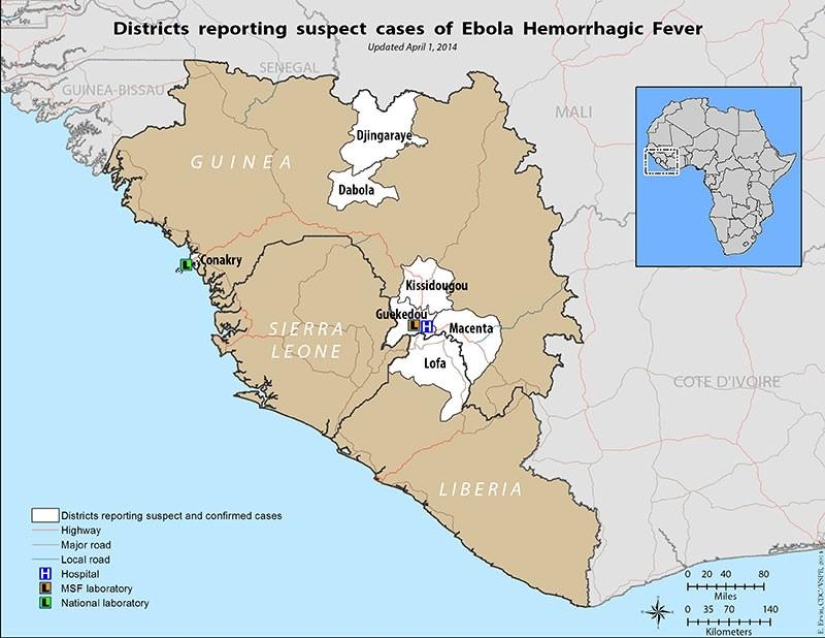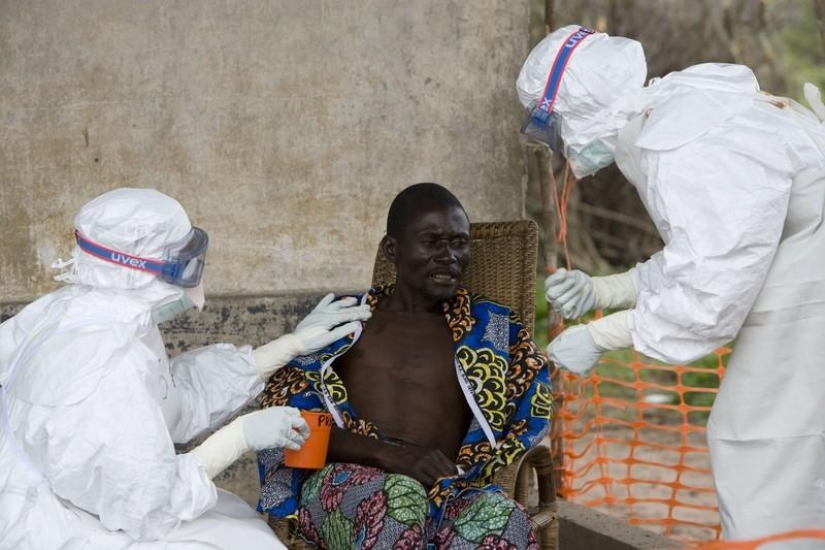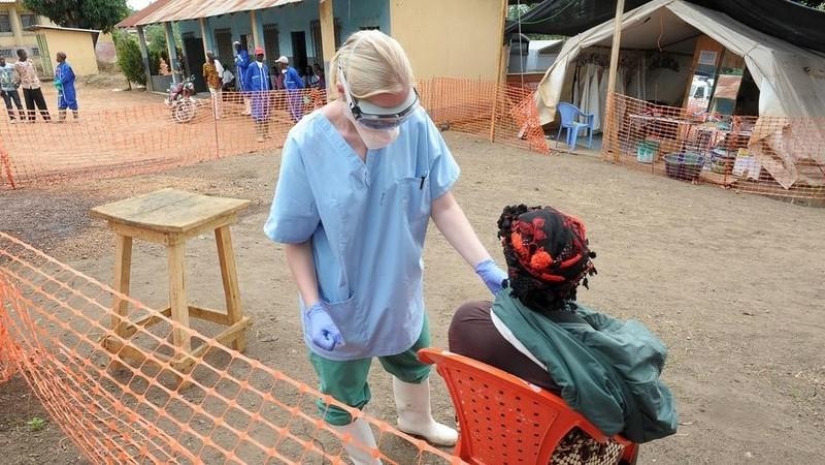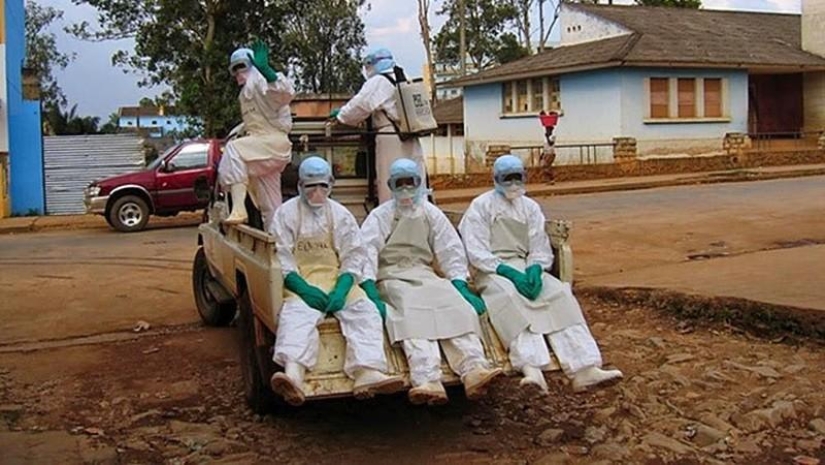10 Ebola Facts You Should Know Today
Categories: Health and Medicine
By Pictolic https://pictolic.com/article/10-ebola-facts-you-should-know-today.htmlThere is a mass killer called Ebola raging in Africa right now. We present to your attention a dozen facts that you should know about this type of virus. Everyone should know this, even if you do not live in West Africa, even if you have never been there and are not going to. In the end, the virus is a dangerous thing, and, as they say, it is better to know your enemies by sight.


1. Name.
The virus got its name from the name of the place where it was first discovered. The Ebola River is very close to the point where the first case of this fever was reported, namely Yambuku, in the Democratic Republic of the Congo.

2. Where are you, virus?
At the moment it is localized in the countries of Central and West Africa. It is there that the natural habitat of the animals that carry it is located. So far, the fever is in the area, but there are fears that it could spread further. Two Americans fell ill while nursing in Liberia and were taken to a hospital in Atlanta, USA. However, they are now on the mend.

3. Vaccine.
An Ebola vaccine is currently in clinical trials. "Because this is an emergency, we need to get the vaccine as soon as possible ... by 2015," said the head of the Immunology and Vaccine Division of the World Health Organization. The British pharmaceutical company will begin trials next month.

4. It all started with animals.
Of course, one cannot be 100% sure, but there is evidence that in Africa this epidemic spread from animals, in particular from fruit bats. People ate their undercooked flesh and became infected with this virus. Ebola isn't the only disease you can get from eating raw animal meat, but it's probably the most horrifying disease. Fry the meat thoroughly. Or better yet, switch to vegetables.

5. First flash.
The first outbreak of the disease occurred in 1975 in Zaire (now the Democratic Republic of the Congo). 318 human cases have been reported, and 280 of these have been fatal, ie. the mortality rate was 88%. The disease crossed into Sudan the same year, infecting 284 people and killing 151 (53%).

6. Very high mortality rate.
One of the main things you need to know is that Ebola has an incredibly high mortality rate of 50 to 90%. Given the danger of the disease, the recovery of those who survived it is very fast. The sooner doctors detect the virus, the better the patient's chances of recovery.

7. Infectious stage of the disease.
People are contagious, i.e. they can transmit the virus to others if it is in their blood and other secretions. Usually, when the symptoms of the disease have passed, the virus also goes away. But men can carry the virus in semen for up to 60 days after being infected.

8. Statistics.
The current Ebola outbreak is the largest in history. The number of cases and deaths is still growing, and the epidemic does not smell of weakening. As of August 6, 2014, 1779 cases of this virus were registered, 961 people died.

9. Signs and symptoms.
The disease carried by the Ebola virus is characterized by muscle pain, headache, sore throat and fever. In general, the onset of the disease is very similar to a cold or flu. This is followed by nausea, diarrhea, liver and kidney damage, and in some cases internal and external bleeding.

10. There is no vaccine or cure for Ebola.
There is currently no cure for the Ebola virus, and no vaccine to protect against it. Some countries have tried to develop a treatment or a vaccine, but this will likely take months, if not years. Until today, the world was simply not interested in this disease, because. it hit not so many people and always remained in its "territory". Perhaps that is why no one was involved in the creation of a vaccine or medicine.
Keywords: Virus | Facts | Epidemic
Post News ArticleRecent articles

Most of us think that the color of the eggshell does not play any role and it is possible not to pay attention. But it's not and ...

The more we rely on technology, the more potential power hackers gain over us. It doesn't matter if their goal is to help or cause ...
Related articles

Yes, Pets benefit our health and it is proven by science. Their very existence certainly makes us happier, but also prolongs life. ...

It is not 100% to say that tomorrow is with us nothing bad will happen, because often life throws up surprises when least expected. ...

One of the most famous sayings of Horace says: "no One can know everything!". And we completely agree with his opinion. Every day, ...

Creating a good portrait is one of the most difficult tasks for any photographer. In order to make a really natural and memorable ...